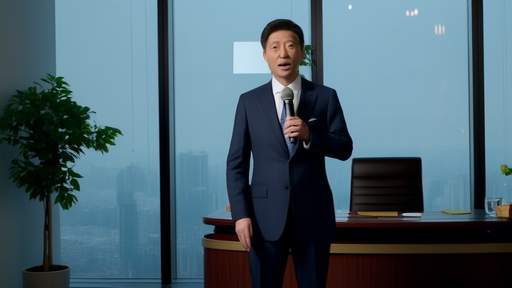The art of crisis communication has evolved into a delicate dance of linguistic precision, where every syllable carries the weight of corporate survival. At its core lies the apology formula – a carefully constructed sequence of verbal and emotional cues designed to navigate the treacherous waters of public outrage. What makes these crisis responses succeed or fail often comes down to microscopic linguistic choices that most consumers process at a subconscious level.
Language scholars have identified that effective crisis apologies follow an almost musical composition structure, with specific notes that must be played in proper sequence. The opening movement typically begins with what linguists call "the acknowledgment downbeat" – an unambiguous admission that something has gone wrong. Companies that substitute this with passive voice constructions ("mistakes were made") or conditional phrasing ("if anyone was offended") trigger immediate cognitive rejection in listeners. The human brain processes these qualifiers as inauthentic before the conscious mind even registers the semantic content.
What follows the initial acknowledgment separates textbook apologies from damage control failures. High-stakes crisis communications require what discourse analysts term "emotional mirroring" – language that precisely reflects the victims' emotional state without seeming performative. This explains why certain corporate apologies feel "off" even when containing all the right words – the emotional calibration misses the specific frequency of public sentiment. The 2010 BP oil spill response failed spectacularly on this count when then-CEO Tony Hayward remarked "I'd like my life back," demonstrating catastrophic emotional misalignment with Gulf Coast residents losing their livelihoods.
The syntactic structure of successful apologies reveals fascinating patterns. Forensic linguists examining hundreds of crisis statements find that compound-complex sentences with multiple dependent clauses consistently test poorly with audiences. The ideal crisis syntax employs short, declarative sentences with concrete verbs – a structure that subconsciously signals decisiveness and transparency. This explains why legal-team-approved statements often backfire; their convoluted syntax designed to limit liability inadvertently communicates evasion.
Pronoun deployment constitutes another minefield in crisis linguistics. First-person singular pronouns ("I") in CEO apologies can read as narcissistic during systemic failures, while excessive corporate "we" language depersonalizes accountability. The delicate balance involves alternating between individual and collective responsibility markers in proportions that match the crisis type. Product harm scandals demand more "we" focus, while leadership misconduct requires appropriate "I" ownership. Get this ratio wrong, and the apology fuels rather than extinguishes backlash.
Perhaps most counterintuitively, the most effective crisis statements often include what communication researchers call "strategic vulnerability" – carefully placed imperfections that enhance authenticity. A slight stumble in delivery, one emotionally charged but imperfect word choice, or a single moment of unpolished sincerity can accomplish what dozens of focus-group-tested phrases cannot. This explains why some technically flawed apologies resonate while polished ones fail – human brains are wired to detect and reward authentic emotional signals amid crisis communication noise.
The temporal linguistics of apologies also play a decisive role. Crisis communication exists in what linguists call "the accountability present tense" – that narrow window where the public grants permission for an organization to respond. Statements arriving too early risk seeming dismissive of ongoing impacts; those delayed past the cultural attention cycle arrive as irrelevant artifacts. The sweet spot involves responding after initial facts emerge but before narrative crystallization, allowing the apology to shape rather than react to public interpretation.
Nonverbal linguistic elements frequently outweigh verbal content in crisis perception. Paralanguage features – the tone, pace, and timbre of spoken apologies – convey more sincerity than lexical choices. This explains why written statements often fail to quell outrage; they strip away the vocal cues humans evolved to trust. Similarly, kinesic elements (facial expressions, posture) in video apologies create either congruence or dissonance with spoken words. The 2017 United Airlines crisis deepened when CEO Oscar Munoz's defiant body language during interviews contradicted his conciliatory script.
Cultural linguistics further complicate the apology formula. Collectivist societies expect different crisis language than individualist cultures – the former requiring more group harmony restoration markers, the latter demanding individual accountability signals. Global brands now maintain crisis playbooks with region-specific linguistic protocols, understanding that a syntax that works in Tokyo may bomb in Toronto. The 2018 Starbucks racial bias incident demonstrated masterful cultural-linguistic alignment when executives coupled their apology with immediate store closures for retraining – a linguistic act that "spoke" louder than words through symbolic action.
Perhaps the most overlooked aspect of crisis linguistics involves what isn't said. Pragmatic analysts examine the strategic silence surrounding apologies – the topics carefully excluded from the speech act. Overly comprehensive apologies that address every conceivable complaint often ring hollow, while those acknowledging core failures while leaving peripheral issues unmentioned frequently land as more focused and sincere. The art lies in knowing which elephants to name and which to leave roaming the rhetorical room.
As social media accelerates crisis cycles, the apology formula continues evolving. What began as days-long PR processes now unfold in hours, with linguistic missteps amplified globally before legal teams can review statements. This new environment favors what linguists call "proto-apologies" – initial acknowledgments that stake emotional territory while buying time for comprehensive response development. The companies that thrive in this landscape understand that crisis linguistics isn't about finding perfect words, but about demonstrating perfect alignment between language, emotion, and corrective action.
The neuroscience behind apology reception reveals why certain phrases trigger forgiveness while others inflame. When language activates the brain's theory of mind networks – making listeners feel truly understood – it initiates biological forgiveness processes. Effective crisis communicators craft statements that don't just inform but neurologically engage, creating the conditions for reconciliation before the audience consciously decides to forgive. In our hyper-transparent era, the companies that survive crises will be those that master not just what they say, but how their language makes people feel at a primal, synaptic level.

By /Jun 3, 2025

By /Jun 3, 2025

By /Jun 3, 2025

By /Jun 3, 2025

By /Jun 3, 2025

By /Jun 3, 2025

By /Jun 3, 2025

By /Jun 3, 2025

By /Jun 3, 2025

By /Jun 3, 2025

By /Jun 3, 2025

By /Jun 3, 2025

By /Jun 3, 2025

By /Jun 3, 2025

By /Jun 3, 2025

By /Jun 3, 2025

By /Jun 3, 2025

By /Jun 3, 2025

By /Jun 3, 2025

By /Jun 3, 2025